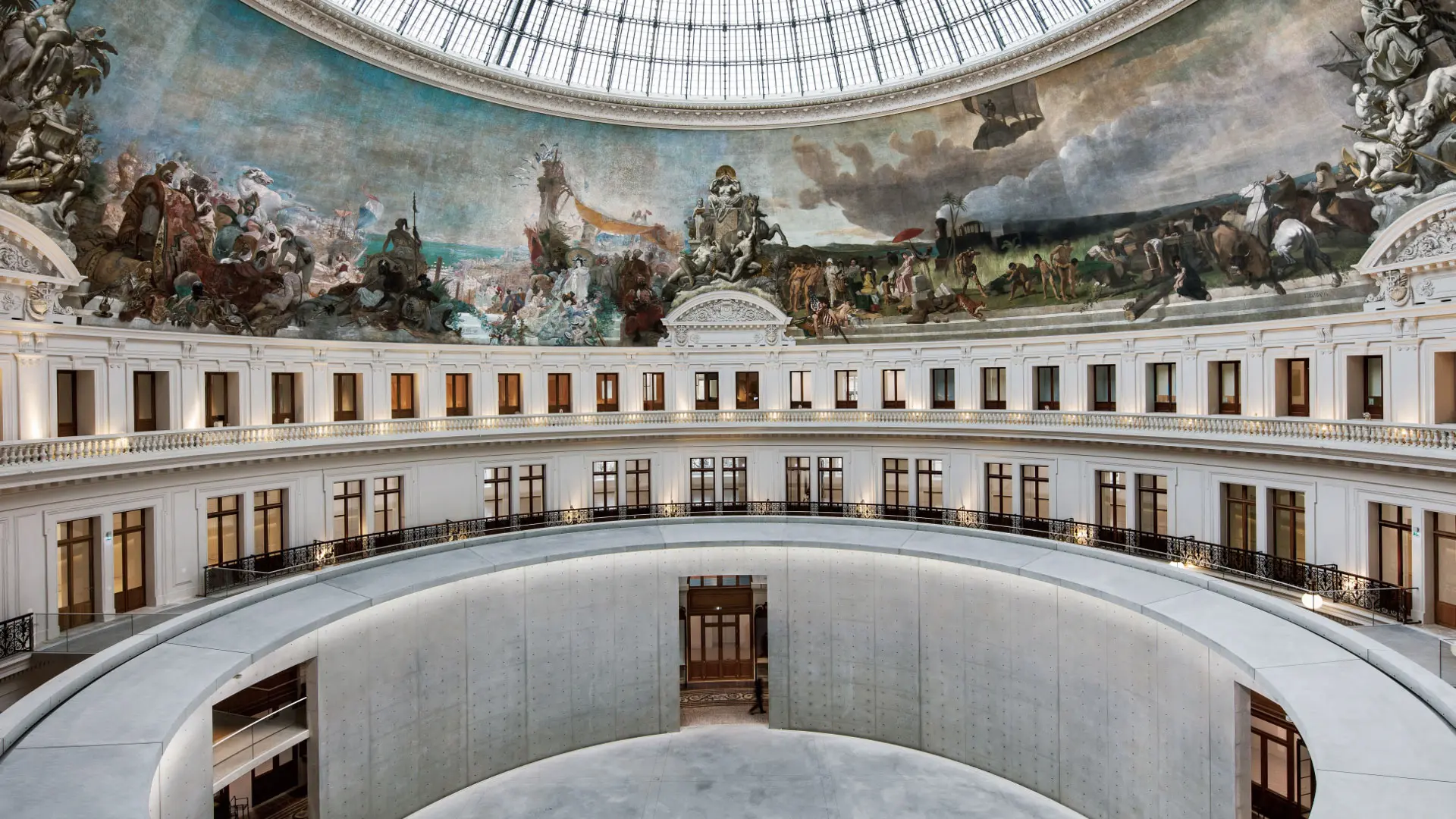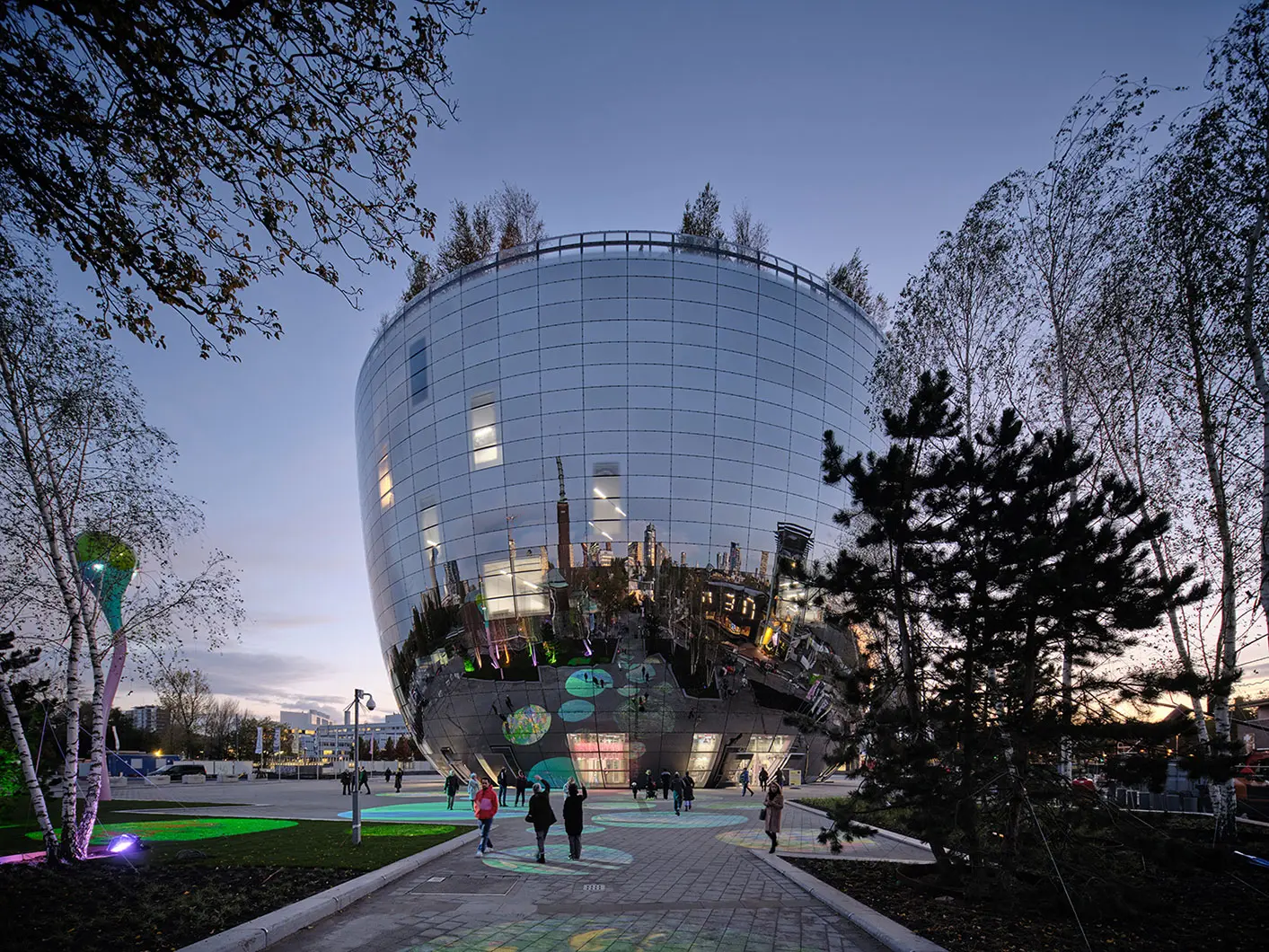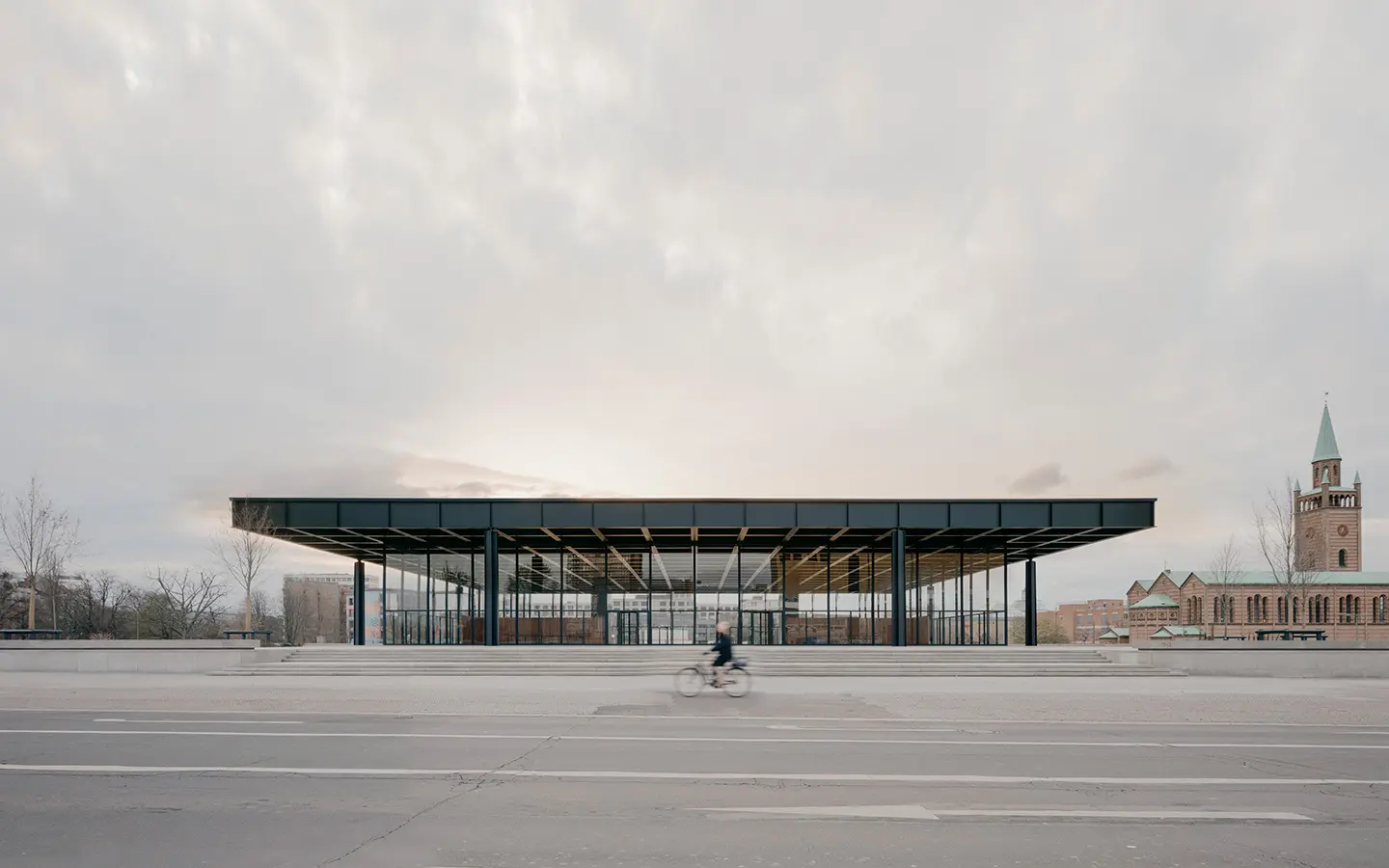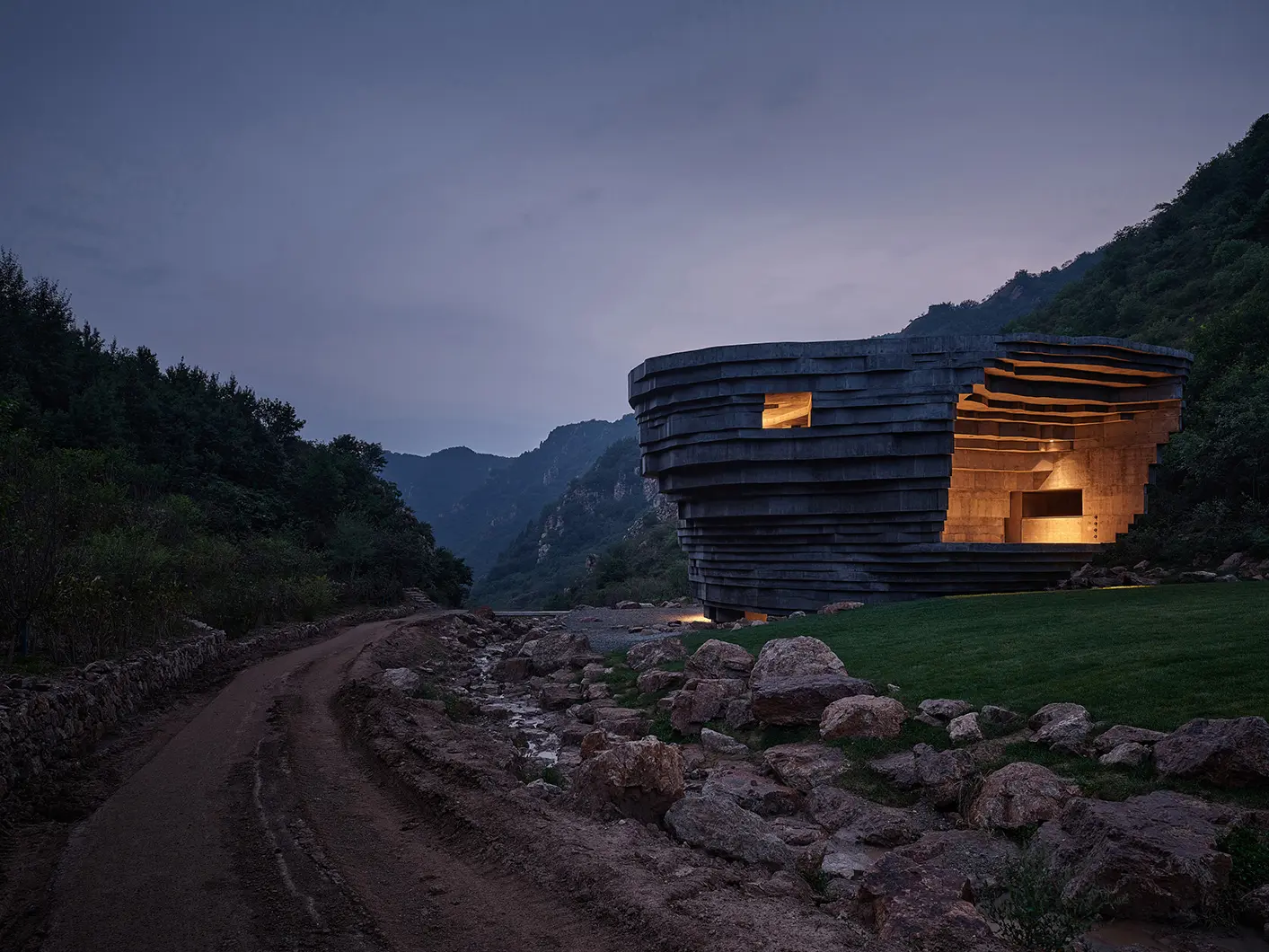From BIG to David Chipperfield, Frank Gehry to Snøhetta: a world tour of the best buildings set to open in 2026
The World Around 2022: a summit on contemporary issues

Courtesy of Bourse de Commerce, Pinault Collection. Image credit: TadaoAndo Architect & Associates, NeM/ Nineyet Marca Architectes, AgencePierre-Antoine Gatier. Ph. Patrick Tourneboeuf
Curated by Beatrice Galilee, a symposium at the Guggenheim brings together international designers, thinkers and experts to create an archive of practices that will lead to concrete change
Architecture and design are disciplines through which pressing urgent contemporary issues can be addressed: climate change, racial and social equity, ecology, indigenous rights, new technologies and possible utopias. Designers are equipped to tackle these issues in a practical and propositive approach, each project bringing us a step closer to the future.
The aim of The World Around, a new no-profit organisation set up by the curator Beatrice Galilee, is to create a network of contemporary thinkers and creators who share this approach. “We try to use The World Around as a way to speak about design as current affairs, not just describing objects or buildings," Galilee said. "This year we are seeing more and more people working to unpack and understand the intensely complicated world we are living in.” The World Around is an annual symposium, the third and latest edition of which was held on 5th February at the Guggenheim Museum in New York and online, with speakers from all over the world: Tokyo, Beijing, Rosario, Brasilia, Milan, Zurich and Barcelona.
The international range of the event is underscored by its other institutional partner, the Dutch Het Niewe Insituut museum, its involvement creating a bridge between the United States and Europe. Galilee has been painstaking in curating a series of conferences giving voice to the huge diversity of points of view, approaches and ideas from all over the world, avoiding an exclusively western perspective, which – unfortunately – is all too common in these sorts of events. The symposium on 5th February 2022 was split into three 2-hour sessions, with three complementary themes.

Depot Boijmansvan Beuningen, courtesy of MVRDV. Image credit Ossipvan Duivenbode
Session 1: Schools, trainers, stories and other agents of change
The first part of the event saw a series of professionals and experts talking about educational projects, collective ventures and new ideas capable of “bringing about change in the world.” The very first speaker was the architect, academic and writer Lesley Lokko, recently appointed curator of the 2023 Venice Architecture Biennale. Lokko spoke about the African Futures Initiative (AFI), a Ghana-based post-graduate school of architecture and an institution that is still in the process of being set up, decidedly evolving, with no real model or precedent. It owes a great deal to the many small, often independent schools of architecture that have sprung up all over the world in the last 50 years. It has strong ties with the Radical Pedagogies project launched by Beatriz Colomina at Princeton University: not so much in terms of structure or curriculum or even ambition, as in the idea of “root” – an experimental horizon of ideas and perspectives brought together in a single place, she said. Among the other speakers at the first session were the Italian studio Formafantasma, who spoke about their latest exhibition Cambio and the concept of Geo-Design; the curator Camila Marambio presented the Turba Tol Hol-Hol Tol collective project, which is involved with the conservations of peatlands in Chile, and the Top Manta collective talked about the ethical production of clothes and shoes, which aims to improve the living conditions of street vendors in Barcelona.

Neue Nationalgalerie, Berlin View from Potsdamer Straße. Image credit Simon Menge
Session 2: Ice, stone, sand and other archives
The second session, presented by Aric Chen, Director of the Het Nieuwe Instituut, focused on the changing relationship between architecture and time. Speakers included Pritzker award-winner Tadao Ando, who presented his restauration project for the Bourse de Commerce in Paris, now the Pinault Collection; the Design Earth collective spoke about the book The Planet After Geoengineering, in which it imagines urban and post-natural landscapes in a far-off, dystopian future. The co-founder of Limbo Accra, Dominique Petit-Frère, discussed the work of the Ghanaian studio, which revisits uncompleted buildings across the country with art projects. The building that best represents the engagement/clash between architecture and time is Depot Boijmans Van Beuningen, the first respository of totally accessible art, located in Rotterdam’s Museum Park, and a building that revolutionises the approach to conserving works of art. The architect Winy Maas, founder of the MVRDV studio and author of the project, gave The World Around viewers a (virtual) guided tour of the building, explaining that the archive is organised by material – sculptures, paper, photographs and paintings. Each requires a different kind of environment and space. The central atrium is surrounded by 50 types of rooms of different sizes, temperatures, lighting and humidity. Walking past the doors and windows gives the impression of being in a small city of art.

Chapel of Sound, courtesy of OPEN Architecture. Ph. Jonathan Leijonhufvud
Session 3: Trees, words, images and other monuments
Can a forest be a monument? How can the new technologies influence design and make it fairer? The researchers and designers invited to take part in this session discussed conservation from an intersectional approach, picking up on a number of contemporary cross-threads. The speakers included Monument Lab, a practical Philadelphia-based no-profit organisation that explores the political implications of monuments in American cities. The architect, educator and writer Paolo Tavares then presented his project Trees, Palms, Vines and Other Architectural Monuments, in which he questions what an architectural monument really is, while DAAR (Sandi Hilal and Alessandro Petti) have recently drawn up a dossier proposing the Dheisheh refugee camp as a UNESCO heritage site: the concept of belonging has been radically transformed in refugee camps, they say. They have looked at how the inhabitants of these places become self-organised and support each other. Recognising the fact that these camps are illegal, and that they shouldn’t have been built right from the start, DAAR believes that their 70-year existence cannot be denied and that the importance of these “temporary” facilities should be recognised, which has motivated them to request UNESCO to certify the value of this heritage.


 Salone Selection
Salone Selection








